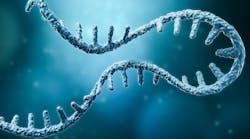Never in living memory has the need for new medicines been as acute or uppermost in the minds of the general public as it has been during the pandemic.
Prior to COVID-19, the average cost of research and development needed to successfully bring a new drug to market was estimated to be $1335.9 million in the U.S., though estimates vary greatly — ranging from $161 million to $4.54 billion — depending on the country, therapy area and methods of estimation. Even without accounting for the typical 80–90% failure rate of drug candidates, the cost represents a heavy capital investment. And while investment has continued to grow since the pandemic struck, it remains imperative that biopharma companies improve the efficiency and success rates of their commercial drug development. So how can the industry achieve this?
An obvious answer and one that is being increasingly embraced industry-wide is the application of advanced automation powered by digital technologies throughout the entire drug development life cycle. The benefits of automation have been clearly demonstrated in other industries, most notably the automobile industry, where automation of production and assembly workflows delivered significant gains in efficiency, quality control and cost-effectiveness.
The biopharma industries are currently experiencing a rapid increase in automated solutions being developed in response to customer needs. This automation makeover — from R&D laboratories to industrial manufacturing plants — is critical for industrializing both biopharma and the basic life sciences research that underpins the discovery and development of new therapies. This industrialization of biology provides an opportunity to learn from other disciplines and radically reform the way scientists and drugmakers approach the problems of discovering and developing new therapies to treat — and potentially even cure — disease.
Automation is industrializing R&D
The path to treating disease often starts in academic and biopharma research labs, where diseases are biochemically characterized, pathological mechanisms elucidated, potential treatment targets identified and candidate interventions discovered. Traditional approaches have relied substantially on empirical wet bench experimentation but recent innovations in digital information technologies and data science have generated novel hybrid wet and dry lab-based approaches such as systems biology. To industrialize R&D and compress the time associated with the research portion of drug discovery, design and development, automated solutions are required that address challenges faced in both lab environments.
A classic example of this is how automation of a routine task such as pipetting has been able to liberate scientists to allocate more time and attention towards more intellectual tasks while simultaneously expand- ing their practical and experimental capabilities in R&D and beyond.
Currently, liquid handling robots and workstations are being used with automation-friendly cell counters and media bioanalyte analysis systems in automated workflows for parallel processing and quicker identification of stable cell lines by cell line development labs. These automated systems also support upstream process development and the monitoring of product quality in manufacturing by biopharma and contract development and manufacturing companies. With even simple tasks such as pipetting, the incorporation of automation has improved standardization, making the task performance more precise — especially important for transferring incredibly low volumes — and reproducible.
Taking automation to the next level, the computational capabilities offered by machine learning (ML), artificial intelligence (AI) and edge computing have enabled more complex tasks to be performed with greater efficiency, precision and throughput. Computational advances have also facilitated experimentation traditionally performed solely at the wet bench to be conducted in silico in dry labs. For instance, new protein purification platforms allow biopharma scientists to plan experiments and analyze their results with the design of experiments (DoE), which significantly reduces the time and cost of setting up new chromatography processes that have historically been accomplished through cumbersome empirical approaches.
Intelligent automation has made in-roads
As an increasing number of tasks are automated using a variety of cyber-physical or ‘intelligent’ systems and platforms, it can be challenging to stitch these tasks together into a complete end-to-end process. Solutions have therefore been developed aimed at integrating these ‘islands of automation.’ The challenges of integrating automation for bioprocesses are compounded by the rapidly growing number of emerging therapeutic classes, such as next-generation biologic drugs like antibody-drug conjugates (ADCs) and new modality drugs like RNA vaccines and other genomic medicines.
Cyber-practical systems are being developed to address the challenges particular to certain therapeutic classes, such as cell therapies where the bioprocesses for manufacturing can include unique challenges like those posed by obtaining biological raw materials from individual patients in a clinical setting, modifying these materials into a therapeutic product in full compliance with Good Manufacturing Practice regulations, then distributing the therapy back to those individual patients. From end to end, this comprises a complex and time-sensitive supply chain. And like other sectors, the pandemic has highlighted vulnerabilities in these supply chains.
Even before the pandemic, digital solutions were being designed and launched to improve the connectivity, monitoring and management of biomanufacturing, dedicated to specific therapeutic classes. For example, software that facilitates the digital integration of various equipment can support the development of the bioproduction process all the way through to the actual facility manufacturing operations. Through such a unified platform, users can coordinate complex cryogenic chain logistics to and from clinics, including the scheduling, temperature control and real-time tracking of shipments.
End-to-end automation infrastructure
To continue to achieve the speed to market we saw with COVID-19 vaccines during the pandemic, the biopharma industry needs to adopt more automation, both in the R&D laboratory and in the manufacturing process. By automating, biopharma companies can apply more standardized approaches to eliminate time-consuming, inefficient and error-prone manual tasks; stream- line processes; accelerate time to results; and lower costs, from discovery in the lab to bioproduction in the manufacturing suite.
However, many R&D labs, even hybrid ones, do not include integrated automation. Beyond lab equipment like microscopes that now incorporate automation and AI technology, workflows are still largely manual, with work and record keeping performed on paper. On the manufacturing side, there is more automation infrastructure, but it is typically incomplete, disjointed or generally underutilized. There is too much reliance on tried and trusted legacy methods that are not optimally standardized. Nowadays, modular and standardized mechanisms are needed to drive the efficiency and speed that the world has become accustomed to with the precedent set by the COVID-19 vaccines.
Despite barriers to adoption, such as inexperience that fuels resistance to change and intractable legacy systems that are difficult to automate, it is imperative for biopharma companies to embrace new automation strategies to transition into the new era of industrialized biology. From research labs to manufacturing plants, intelligent automation can deliver benefits such as easier workflow integration, coordination and management, higher efficiency, increased agility and resilience, reduced risks and costs, and faster time to market. Biopharma needs to be able to scale faster and more effectively, especially to meet the rising demands for life-saving therapeutics and vaccines. If COVID-19 has revealed anything, it is that speed and scalability matter immensely. The best way to accomplish this is to industrialize biology.
Democratizing biopharma therapeutics
Automation is key to the industrialization of biology, and it needs to be achieved for both research labs and production from an end-to-end perspective. In labs, technologies such as automated liquid handling systems for automating sample collection and distribution for running arrays of tests, can speed up workflows and drive efficiency improvements by performing in hours what would take days or weeks to achieve manually. In biomanufacturing facilities, technologies such as automated bioprocess systems can improve operational efficiency through automation. In process development, automation simplifies the collection and comparison of large numbers of data points.
There needs to be a more aggressive move to end-to-end automation, from R&D to manufacturing, for biopharma companies to reap the true potential of this industrialization. Automation encapsulates and cements the standardization in repeatable tasks, delivering greater efficiency and providing flexibility to increase or decrease production based on demand. These gains can also bring economies of scale, especially at larger, industrial levels.
Just as industrialization democratized cars, industrialization will make life-saving drugs more accessible to broader populations. To accomplish it, automation needs to be more fully integrated into the end-to-end biopharma continuum, helping to democratize the next major wave of biologic drugs.
The automation makeover of labs and factories is critical for the realization of Biopharma 4.0. From a science and technology company standpoint, best-of-breed companies need to build their business around developing and producing tools for biopharma that incorporate more seamlessly integrated smart automation systems. This involves continuing to figure out how to manage the data that is being generated and used in exponentially larger amounts while simultaneously ensuring data integrity and leveraging ML, AI and edge computing to maximize the effectiveness of R&D.
Ultimately, our aim should be to reduce time to market for drug development by 50% and lower the overall cost in order to make drugs as universally available to the global population as possible.






